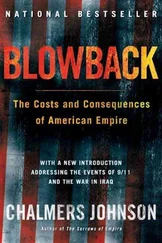Chalmers Johnson - The Sorrows of Empire - Militarism, Secrecy, and the End of the Republic
Здесь есть возможность читать онлайн «Chalmers Johnson - The Sorrows of Empire - Militarism, Secrecy, and the End of the Republic» весь текст электронной книги совершенно бесплатно (целиком полную версию без сокращений). В некоторых случаях можно слушать аудио, скачать через торрент в формате fb2 и присутствует краткое содержание. Год выпуска: 2003, ISBN: 2003, Издательство: Macmillan, Жанр: Старинная литература, на английском языке. Описание произведения, (предисловие) а так же отзывы посетителей доступны на портале библиотеки ЛибКат.
- Название:The Sorrows of Empire: Militarism, Secrecy, and the End of the Republic
- Автор:
- Издательство:Macmillan
- Жанр:
- Год:2003
- ISBN:9780805077971
- Рейтинг книги:4 / 5. Голосов: 1
-
Избранное:Добавить в избранное
- Отзывы:
-
Ваша оценка:
- 80
- 1
- 2
- 3
- 4
- 5
The Sorrows of Empire: Militarism, Secrecy, and the End of the Republic: краткое содержание, описание и аннотация
Предлагаем к чтению аннотацию, описание, краткое содержание или предисловие (зависит от того, что написал сам автор книги «The Sorrows of Empire: Militarism, Secrecy, and the End of the Republic»). Если вы не нашли необходимую информацию о книге — напишите в комментариях, мы постараемся отыскать её.
The Sorrows of Empire: Militarism, Secrecy, and the End of the Republic — читать онлайн бесплатно полную книгу (весь текст) целиком
Ниже представлен текст книги, разбитый по страницам. Система сохранения места последней прочитанной страницы, позволяет с удобством читать онлайн бесплатно книгу «The Sorrows of Empire: Militarism, Secrecy, and the End of the Republic», без необходимости каждый раз заново искать на чём Вы остановились. Поставьте закладку, и сможете в любой момент перейти на страницу, на которой закончили чтение.
Интервал:
Закладка:
Our country deploys well over half a million soldiers, spies, technicians, teachers, dependents, and civilian contractors in other nations and just under a dozen carrier task forces in all the oceans and seas of the world. We operate numerous secret bases outside our territory to monitor what the people of the world, including our own citizens, are saying, faxing, or e-mailing to one another. Our globe-girding military and intelligence installations bring profits to civilian industries, which design and manufacture weapons for the armed forces or undertake contract services to build and maintain our far-flung outposts. One task of such contractors is to keep uniformed members of the imperium housed in comfortable quarters, well fed, amused, and supplied with enjoyable, affordable vacation facilities. Whole sectors of the American economy have come to rely on the military for sales. On the eve of our second war on Iraq, for example, the Defense Department ordered 273,000 bottles of Native Tan sunblock (SPF 15), almost triple its 1999 order and undoubtedly a boon to the supplier, Control Supply Company of Tulsa, Oklahoma, and its subcontractor, Sun Fun Products of Daytona Beach, Florida. 1
The new American empire has been a long time in the making. Its roots go back to the early nineteenth century, when the United States declared all of Latin America its sphere of influence and busily enlarged its own territory at the expense of the indigenous people of North America, as well as British, French, and Spanish colonialists, and neighboring Mexico. Much like their contemporaries in Australia, Algeria, and tsarist Russia, Americans devoted much energy to displacing the original inhabitants of the North American continent and turning over their lands to new settlers. Then, at the edge of the twentieth century, a group of self-conscious imperialists in the government—much like a similar group of conservatives who a century later would seek to implement their own expansive agendas under cover of the “war on terrorism”—used the Spanish-American War to seed military bases in Central America, various islands in the Caribbean, Hawaii, Guam, and the Philippines.
With the Second World War, our nation emerged as the richest and most powerful on earth and a self-designated successor to the British Empire. But as enthusiastic as some of our wartime leaders, particularly President Franklin D. Roosevelt, were for the task, the American people were not. They demanded that the country demobilize its armies and turn the nation’s attention to full employment and domestic development. Peace did not last long, however. The Cold War and a growing conviction that vital interests, even national survival, demanded the “containment” of the Soviet Union helped turn an informal empire begun during World War II into hundreds of installations around the world for the largest military we ever maintained in peacetime.
During the almost fifty years of superpower standoff, the United States denied that its activities constituted a form of imperialism. Ours were just reactions to the menace of the “evil empire” of the USSR and its satellites. Only slowly did we Americans become aware that the role of the military was growing in our country and that the executive branch—the “imperial presidency”—was eroding the democratic underpinnings of our constitutional republic. But even at the time of the Vietnam War and the abuses of power known as Watergate, this awareness never gained sufficient traction to reverse a Cold War-driven transfer of power from the representatives of the people to the Pentagon and the various intelligence agencies, especially the Central Intelligence Agency.
By the time the Soviet Union collapsed in 1991, and with it the rationale for American containment policies, our leaders had become so accustomed to dominance over half the globe that the thought of giving it up was inconceivable. Many Americans simply concluded that they had “won” the Cold War and so deserved the imperial fruits of victory. A number of ideologists began to argue that the United States was, in fact, a “good empire” and should act accordingly in a world with only one dominant power. To demobilize and turn our resources to peaceful ends would, they argued, constitute the old-fashioned sin of “isolationism.”
In the first post-Cold War decade, we mounted many actions to perpetuate and extend our global power, including wars and “humanitarian” interventions in Panama, the Persian Gulf, Somalia, Haiti, Bosnia, Colombia, and Serbia, while maintaining unchanged our Cold War deployments in East Asia and the Pacific. In the eyes of its own people, the United States remained at worst an informal empire. After all, it had no colonies and its massive military forces were deployed around the world only to maintain “stability,” or guarantee “mutual security,” or promote a liberal world order based on free elections and American-style “open markets.”
Americans like to say that the world changed as a result of the September 11, 2001, terrorist attacks on the World Trade Center and the Pentagon. It would be more accurate to say that the attacks produced a dangerous change in the thinking of some of our leaders, who began to see our republic as a genuine empire, a new Rome, the greatest colossus in history, no longer bound by international law, the concerns of allies, or any constraints on its use of military force. The American people were still largely in the dark about why they had been attacked or why their State Department began warning them against tourism in an ever-growing list of foreign countries. (“Why do they hate us?” was a common plaint heard on talk shows, and the most common answer was “jealousy.”) But a growing number finally began to grasp what most non-Americans already knew and had experienced over the previous half century—namely, that the United States was something other than what it professed to be, that it was, in fact, a military juggernaut intent on world domination.
Americans may still prefer to use euphemisms like “lone superpower,” but since 9/11, our country has undergone a transformation from republic to empire that may well prove irreversible. It suddenly became “un-American” to question the Bush administration’s “war on terrorism,” let alone a war on Iraq, or on the whole “axis of evil,” or even on the sixty or so countries that the president and his secretary of defense announced contained al-Qaeda cells and so were open targets for unilateral American intervention. The media allowed themselves to be manipulated into using sanitized expressions like “collateral damage,” “regime change,” “illegal combatants,” and “preventive war” as if these somehow explained and justified what the Pentagon was doing. At the same time, the government was making strenuous efforts to prevent the new International Criminal Court from ever having the option of considering war crimes charges against American officials.
This book is a guide to the American empire as it begins openly to spread its imperial wings. Its reach is global: as of September 2001, the Department of Defense acknowledged at least 725 American military bases existed outside the United States. Actually, there are many more, since some bases exist under leaseholds, informal agreements, or disguises of various kinds. And more have been created since the announcement was made. The landscape of this military empire is as unfamiliar and fantastic to most Americans today as Tibet or Timbuktu were to nineteenth-century Europeans. Among its recent additions are the al-Udeid air base in the desert of Qatar, where several thousand American military men and women live in air-conditioned tents, and the al-Masirah Island naval air station in the Gulf of Oman, where the only diversion is “wadi ball,” a cross between volleyball and football. It includes expensive, permanent garrisons built between 1999 and 2001 in such unlikely places as Kosovo, Kyrgyzstan, and Uzbekistan. America’s modern empire of bases also has its entertainment and getaway spots, much like those north Indian hill towns the administrators of the British Raj used for rest and recreation in the summer heat. The modern equivalents of Darjeeling, Kalimpong, and Srinagar are the armed forces’ ski and vacation center at Garmisch in the Bavarian Alps, its resort hotel in downtown Tokyo, and the 234 military golf courses it operates worldwide, not to mention the seventy-one Learjets, thirteen Gulfstream IIIs, and seventeen Cessna Citation luxury jets used to fly admirals and generals to such spots. At a cost of $50 million apiece, each Gulfstream accommodates twelve passengers plus two pilots, one flight engineer, a communications systems operator, and a flight attendant.
Читать дальшеИнтервал:
Закладка:
Похожие книги на «The Sorrows of Empire: Militarism, Secrecy, and the End of the Republic»
Представляем Вашему вниманию похожие книги на «The Sorrows of Empire: Militarism, Secrecy, and the End of the Republic» списком для выбора. Мы отобрали схожую по названию и смыслу литературу в надежде предоставить читателям больше вариантов отыскать новые, интересные, ещё непрочитанные произведения.
Обсуждение, отзывы о книге «The Sorrows of Empire: Militarism, Secrecy, and the End of the Republic» и просто собственные мнения читателей. Оставьте ваши комментарии, напишите, что Вы думаете о произведении, его смысле или главных героях. Укажите что конкретно понравилось, а что нет, и почему Вы так считаете.











